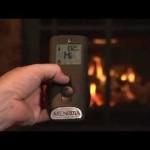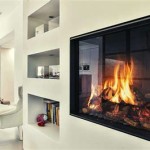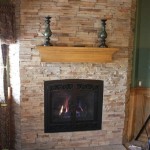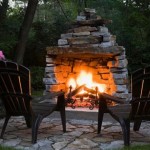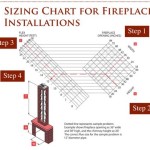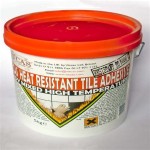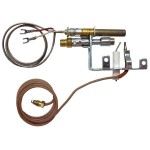DIY Wood Burning Fireplace Installation: A Comprehensive Guide
Installing a wood-burning fireplace can significantly enhance the ambiance and heating efficiency of a home. While professional installation is often recommended, undertaking the project as a DIY endeavor can offer cost savings and a deeper understanding of the home's structural components. This article aims to provide a comprehensive guide to navigating the complexities of DIY wood-burning fireplace installation, focusing on essential considerations and best practices.
Before embarking on the installation process, thorough planning and research are paramount. This involves a detailed assessment of the existing structure, adherence to local building codes, and a clear understanding of the fireplace components and their functionalities. Failure to address these preliminary steps can lead to safety hazards and costly rectifications later.
Understanding Local Building Codes and Regulations
The first step in planning a DIY wood-burning fireplace installation is to thoroughly research and understand local building codes and regulations. These codes dictate the specific requirements for fireplace installation, including clearances from combustible materials, chimney height, and ventilation requirements. Contacting the local building department is crucial to obtain the necessary permits and ensure compliance with all applicable regulations. Failing to adhere to these codes not only poses a safety risk but can also result in fines and the requirement to dismantle the improperly installed fireplace.
Building codes vary significantly depending on the location and jurisdiction. They are designed to protect homeowners and the community from fire hazards and carbon monoxide poisoning. Understanding these regulations is not merely a formality; it's a crucial aspect of ensuring a safe and functional fireplace installation. The building department can provide detailed information on specific requirements related to fireplace design, chimney construction, and ventilation. This proactive approach helps avoid potential problems and delays during the installation process.
Essential Fireplace Components and Their Functions
A wood-burning fireplace is comprised of several essential components, each playing a crucial role in its safe and efficient operation. These components include the firebox, damper, smoke chamber, chimney, and hearth. A clear understanding of each component's function is necessary for a successful DIY installation.
The firebox is the chamber where the fire is built. It is typically constructed of fire-resistant materials such as firebrick to withstand high temperatures. The damper controls airflow through the chimney, allowing for efficient combustion and preventing heat loss when the fireplace is not in use. The smoke chamber channels smoke from the firebox into the chimney. The chimney provides a pathway for exhaust gases to escape the building, ensuring proper ventilation and preventing the buildup of harmful gases like carbon monoxide. The hearth is the non-combustible area in front of the firebox, protecting the surrounding floor from sparks and embers.
Selecting the appropriate components is also essential. Pre-fabricated fireplaces offer a simplified installation process compared to building a fireplace from scratch. However, regardless of the chosen method, ensuring that all components meet safety standards and are compatible with the existing structure is paramount.
Step-by-Step Installation Process
The installation process typically involves several distinct stages, starting with site preparation, followed by firebox installation, chimney construction, and finally, finishing details. The specific steps may vary depending on whether a pre-fabricated fireplace or a custom-built fireplace is chosen.
Site preparation includes clearing the area where the fireplace will be located and ensuring the floor is structurally sound and level. This may involve reinforcing the floor joists to support the weight of the fireplace. Next, the firebox is installed according to the manufacturer's instructions. This step requires careful attention to detail to ensure proper alignment and secure attachment to the surrounding structure.
Chimney construction is a critical step. The chimney must be properly sized and constructed to ensure adequate draft and prevent backdrafting of smoke into the home. This involves assembling chimney sections and securing them with appropriate fasteners. The chimney should extend above the roofline by a sufficient height to prevent downwind conditions from affecting the draft. Finally, the hearth and surrounding area are finished to create a safe and aesthetically pleasing environment. This may involve installing non-combustible materials around the fireplace and adding decorative features. Once the installation is complete, a professional inspection is highly recommended to ensure safety and compliance with building codes.
Throughout the entire process, safety should be the top priority. Wearing appropriate safety gear, such as gloves, eye protection, and a dust mask, is crucial. Adhering to the manufacturer's instructions and taking breaks as needed can help prevent accidents and ensure a successful DIY wood-burning fireplace installation. While this guide provides a comprehensive overview, consulting with experienced professionals and seeking guidance from building inspectors throughout the project are highly advisable.

Diy Installation Of Our Indoor Wood Burning Stove A Ive Household

Wood Fireplace Insert Installation Overview By Rockford Chimney Supply

Our Diy Wood Stove Installation The Prairie Homestead

How To Install A Fireplace Insert Diy Save Money

Diy Wood Stove Installation Brick Hearth For

Diy Mobile Home Wood Stove Install

Your Guide To Wood Stove Installation Full Service Chimney

Our Diy Wood Stove Installation The Prairie Homestead

Diy Fireplace Installation Framing And Final Connections

Diy How To Install A Wood Burning Stove Rockford Chimney
Related Posts

